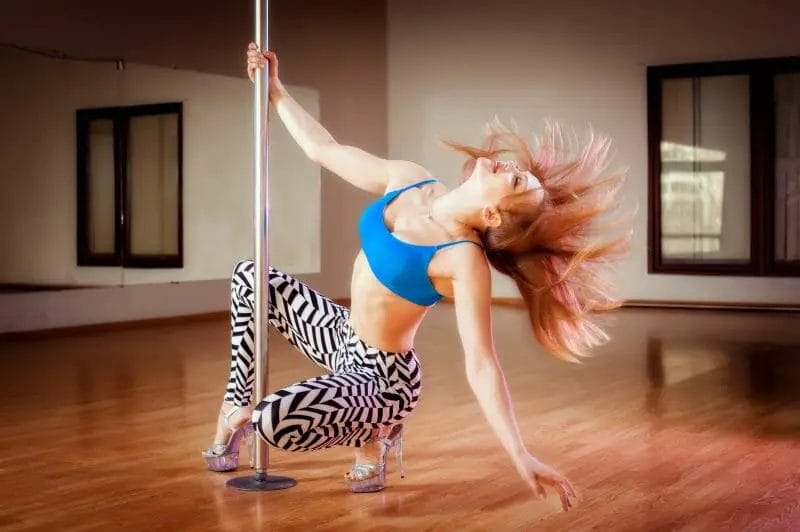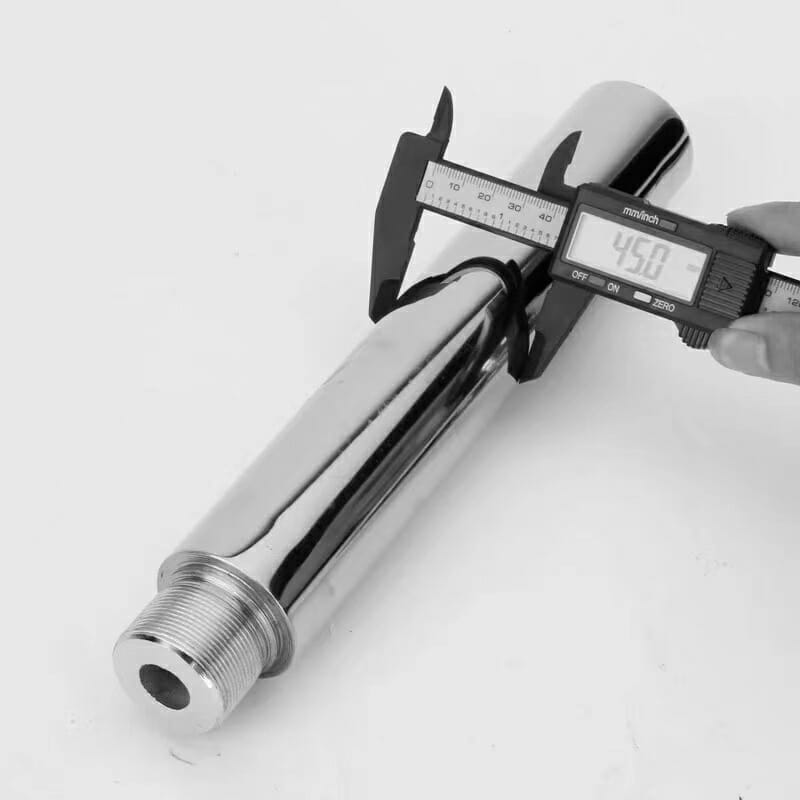Tension dance poles are amazing for getting fit and staying that way, and they are so much fun to use for dancing. This is why it can be a wonderful thing to keep one in your home for easy use. However, there are many people who are under the impression that tension poles are not safe to use.
So, are tension dance poles safe? Fortunately for those who have an interest in setting up one of these removable poles in their home, they are totally safe—that is, as long as they are installed properly and you are using a quality pole. You may be wondering how to know if a pole is high quality, which can be tough to figure out when you are opting for a more affordable one.
When it comes to finding a pole that is good enough for staying safe while practicing on it, there are a few things that you need to pay attention to. These things will be detailed in the following sections so that you can rest assured you will be able to safely do all the dynamic moves you want.

Want to Learn and Practice Pole Dancing at Home?
I recommend opendance.academy online classes.
- Access to more than 450 high-quality video lessons with the lifetime access option ($350)
- Trial classes available from $40
- Excellent value for money when compared to the price of local pole dancing classes
- Suitable for beginner, intermediate, advanced & expert pole dancers
- Their website works on mobiles, tablets and laptops
- A stress-free training environment that you can do in your own time. No driving, parking or stress.
*Use the code dancegaily to get 10% off Pole Dancing Lessons with Open Dance Academy.
This is an exclusive offer for readers of this blog!
Dome
The first thing to look at to see if a tension pole is of high quality is the dome, which is the rounded part on the top of the pole that touches the ceiling. There are a couple of things to pay attention to on the pole’s dome, including the bearings and the rubber that is found on the top part of the piece.
The bearings should be well-greased, they should be able to spin without resistance. As for the rubber found on the top of the dome, you need to make sure it is on the softer side. If the rubber on the piece is too hard and stiff, it will not hold the dome, as well as your pole, in place, which can lead to injuries.
Another thing to keep in mind is that the bigger the dome is, the more surface area of it that will be in contact with the ceiling. More surface area contact means more stability for your tension pole while you are using it.
So, to recap, you want a tension pole with a dome that is sufficiently wide, has soft rubber, and has bearings that are greased and move with ease.
Adjuster Cover Piece
Another component of tension poles that needs to be checked out to assure quality is the piece that is inside of the adjuster cover. The adjuster cover is the part of the pole that hides the adjustable component of it, and it is located at the top of the pole. The piece inside of it is situated there to hold up the cover.
To ensure that the tension pole you are considering buying is of good quality, this component should be made of metal rather than mere plastic. However, make sure you do not just glance at this piece to check it out, as companies will often try to hide the fact that it is made of plastic by painting it a metallic silver color. When this piece is formed out of metal rather than hard plastic, it is much less likely to break while you are using the tension pole. It will also last much longer, preventing you from having to buy a new tension pole in only a few months.
Another thing to look out for on this piece is whether it is held in place by Philip’s screws or by knobs that can be pushed in. If the component has screws keeping it in place, then it is much safer because it holds up the adjuster cover much more effectively when the pole is being climbed up, and it will prevent the cover from moving if you grab that section of the tension pole.
On the other hand, with knobs, you might accidentally push them into the holes while using the pole, which will result in the pole dropping down a few inches. This can potentially lead to an injury, especially when you are not expecting the pole to shift downward while you are in the middle of doing a complex move.
Pole
When it comes to the actual pole, you need to pay attention to how thick the metal is, the joint in the pole, and the paint used on it.

For most body types, you should opt for a tension pole that is at least between 45 and 55 millimeters thick. Although some companies that manufacture tension poles will try to conceal how thick the metal of their poles is by sealing up the ends, if this is not the case, you can look down one of the ends of the pole to check the thickness. The thicker and heavier the metal is, the more stable the pole is when you do dynamic moves while using it.
In regards to the joint in the tension pole, it should not rattle when you shake the pole. This is one way to tell if the joint is tight enough, and it is also a method you can use to tell how thick the metal of the pole is when the manufacturer has sealed the ends.
As for the paint on the tension pole, you should get one with well-plated chrome. The reason for this is that if you get a pole that has the chrome peeling off of it, it can literally cut your skin or get stuck in your hands while you are moving around on the tension pole.
Base
For obvious reasons, the base of your tension pole should be of good quality since it is the part that is keeping the pole from sliding around on the floor.
Similar to the dome at the top of the pole, the base should have rubber on it that is quite soft and flexible so that it secures to the floor more effectively. Also, you should look for quality bearings in the base that are greased up well and move without any trouble.
If your tension pole does not have a quality base, you risk the pole sliding out of place while you are doing a move, which can easily lead to an injury. This is especially important when you are doing moves that require going upside-down, as you certainly do not want to hurt your neck or head.
Additional Safety Measures
There are a few other considerations when trying to stay as safe as possible while using a tension pole. First, you should make sure that when you install the pole, you follow the manufacturer’s instructions perfectly.
Also, think about stabilizing your pole even more by getting a ceiling mount for it. This will lock the pole into place very effectively where it meets the ceiling, and it makes removing the pole super quick and effortless.
Keep in mind that it’s smart to have some training in pole dancing before you decide to install a tension pole in your home. Using one alone is much safer if you already have some experience under your belt. You can always think about placing a thick mat underneath the pole too, for additional security.
Read more:




